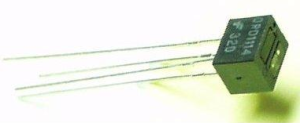Posted in Projects on Jul 10th, 2010
Following on from Part 1, we’ve done our design and now it’s to put our prototype to the test, this will post won’t be as long as the design because all we need to do is test.
This is how our circuit looks to power 1 motor in 1 direction only.

(more…)
Read Full Post »
Posted in Projects on Jun 27th, 2010
So here we are, we’re going to build us a motor controller to control 2 motors in both directions. First we’ll start off with our design which shows how our components will be connected and our reasoning, we could of just bought a motor controller chip like the L298N but we will rather learn something from our build and it should be easier to use than the L298N chip. Another on the plus our motor controller will have is about 1/2 the Vce of the L298N which is an advantage when dealing with low voltage motors and low voltage power supplies as well as back EMF protection (both will be explained).
This is quite a long post and do remember that I’m also new to understanding all of these concepts so do feel free to correct me if I’m doing something wrong! I’ve spent a good month checking all this out, posting on an electronics forum and trying to grasp the concepts I’ll be explaining you.
(more…)
Read Full Post »
Posted in Arduino, Projects on Jun 13th, 2010
We know how to control our 2 motors in both directions and we also know how to use our Phototransistors to detect if an object is close, now we put both of these together to form our robot. In this part we focus more on producing the code as we’ve already put our robot together as below.

(more…)
Read Full Post »
Posted in Arduino, Projects on May 30th, 2010
So we’ve got our robot moving in different directions and now we need it to move to the directions we want which is away from walls. We do this using Phototransistors which is sort of similar to a Light Dependent Resistor (a component that changes resistance due to lighting) except Phototransistors actually use infra-red and have two components, the emitter and detector. The emitter well emits the infra-red (which we can’t see) and the detector detects how much of that infra-red is coming back.

(more…)
Read Full Post »
Posted in Arduino, Projects on May 18th, 2010
So we’ve got our parts and our motor controller so we are now ready to make this robot move forward, backwards and turn. I’m assuming you’ve put the wheels on the motors, mounted them to your design, used a gearbox if necessary and you do have a motor controller. Plus you also have the 9 volt battery and clip for Arduino.
In this part we will need:
- Arduino Duemilanove ATmega328
- 4 x NPN general transistors (e.g. PN100, PN2222)
- 4 x 6.2K Ohm resistors (10K will do fine too)
- Breadboard
- Some wire
Example Schematic below

(more…)
Read Full Post »
Posted in Arduino, Projects on May 3rd, 2010
I’ve decided to make the next project that just about every person exploring electronics does… the making of a small robot. In my case, I’ll be using the Arduino to control the robot which will just be a robot that can avoid walls that I might build more functionality in the future.

The first part of the project is to acquire the necessary parts such as motors, gears, wheels, infrared sensors, etc. Luckily for me, I actually had a robot that I was building up before; it’s the Cycbot from RealRobots (for anyone who might remember it). I got around to issue 6 or 7 and eventually gave up on it. I do however have the motors, gears, wheels and the motor controller, so it’s all actually working, it just goes forward for now.
(more…)
Read Full Post »
Posted in Arduino, Projects on Apr 10th, 2010
So I’m very interested in electronics again and I bought the Arduino Starter Kit from a supplier in Australia and I’ve been testing it out a bit. I also bought an 16×2 LCD, a 8×8 LED Matrix and some other parts too.
I’m always trying to make games out of everything so naturally I started thinking of games that can be made using the LCD and came up with a car type game which you try to avoid walls and shoot enemies blocking your path. This game would be better if you have a 20×4 LCD as just having 2 positions to change to is kind of limiting the game experience.

LCD Road Runner
v0.1 (10 April 2010) – Initial Release with 10 levels
(more…)
Read Full Post »










